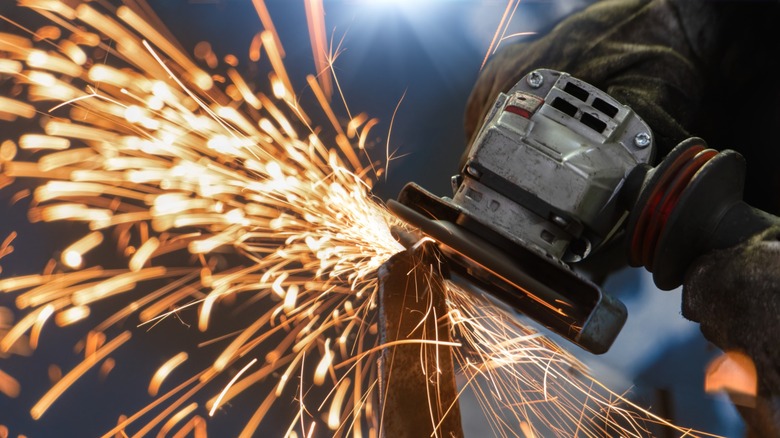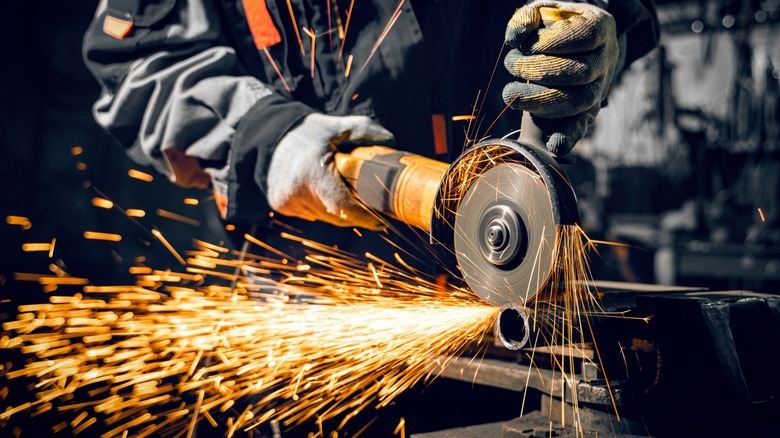What Makes Angle Grinders Some Of The Most Nerve-Racking Tools For Even Pros To Use
When it comes to dangerous garage tools, few inspire more wide‑eyed respect and sweaty palms than the angle grinder. Imagine a compact powerhead spinning at up to 11,000 rpm with sparks flying in all directions. All for a thin abrasive disc to whir within inches of your fingers. Angle grinders are the stuff of horror stories. Even veteran metalworkers admit to a flutter of nerves when they reach for one. Shop owners also admit that every mention of the angle grinder sends their nerves tingling. There is an agreement as the most fearsome entry in their catalogue. All of these definitely set it apart from the different types of power grinders available.
There are lots of ways to hurt yourself if you get complacent with an angle grinder. Part of that fear comes from the sheer unpredictability of this tool. One Reddit user noted that if you set it down wrong, and it whips off the table, it could shatter a cut‑off wheel and send shrapnel flying. Also, a cracked disc can shatter without warning, turning a simple cut into a high‑velocity projectile event. Sparks streaking off at errant angles can ignite nearby rags or fuel sources in a heartbeat. The angle grinder horror show possibilities are endless. With that in mind, here's what makes angle grinders some of the most nerve-racking tools for even pros to use.
The anatomy of an Angle grinder and what really makes them so risky
At its core, an angle grinder is a simple and versatile tool. It is a motor that drives a disc at high speeds to help shape, grind, and sharpen metal. This versatility is part of what differentiates an angle grinder from a cut-off tool. But the devil is in the details. Most units spin between 8,000 and 11,000 rpm. This generates an enormous amount of kinetic energy contained in a small disc.
Sure, that energy can carve through steel or concrete in seconds, but if the disc binds or shatters, fragments become high‑velocity weapons. Some of the most common hazards include contact with the spinning wheel, kicked‑off projectiles, and violent kickback. There is also the risk of fire, entanglement, electric shock, and wheel breakage.
Mastery of the angle grinder comes down to respect, preparation, and the right gear. By all means, you should proceed with caution when using this tool. It is good practice to start every session by inspecting the discs. Look out for hairline cracks. Also, verify its maximum operating speed ratings. Then, choose the correct wheel for each task. Cut‑off discs are good for straight cuts. Grinding wheels are better for stock removal. Diamond blades are best for masonry. You should also avoid swapping discs mid‑job.

